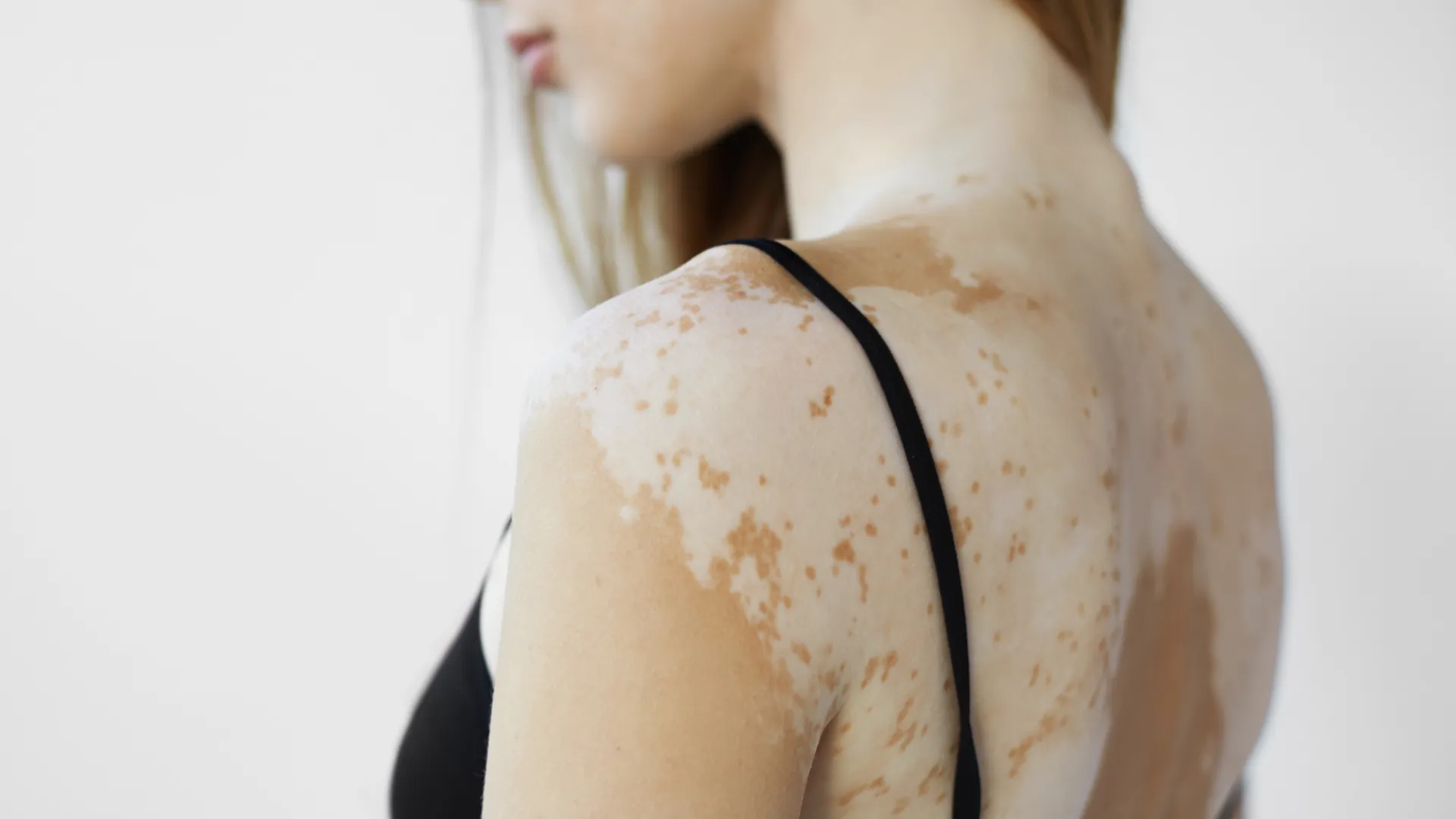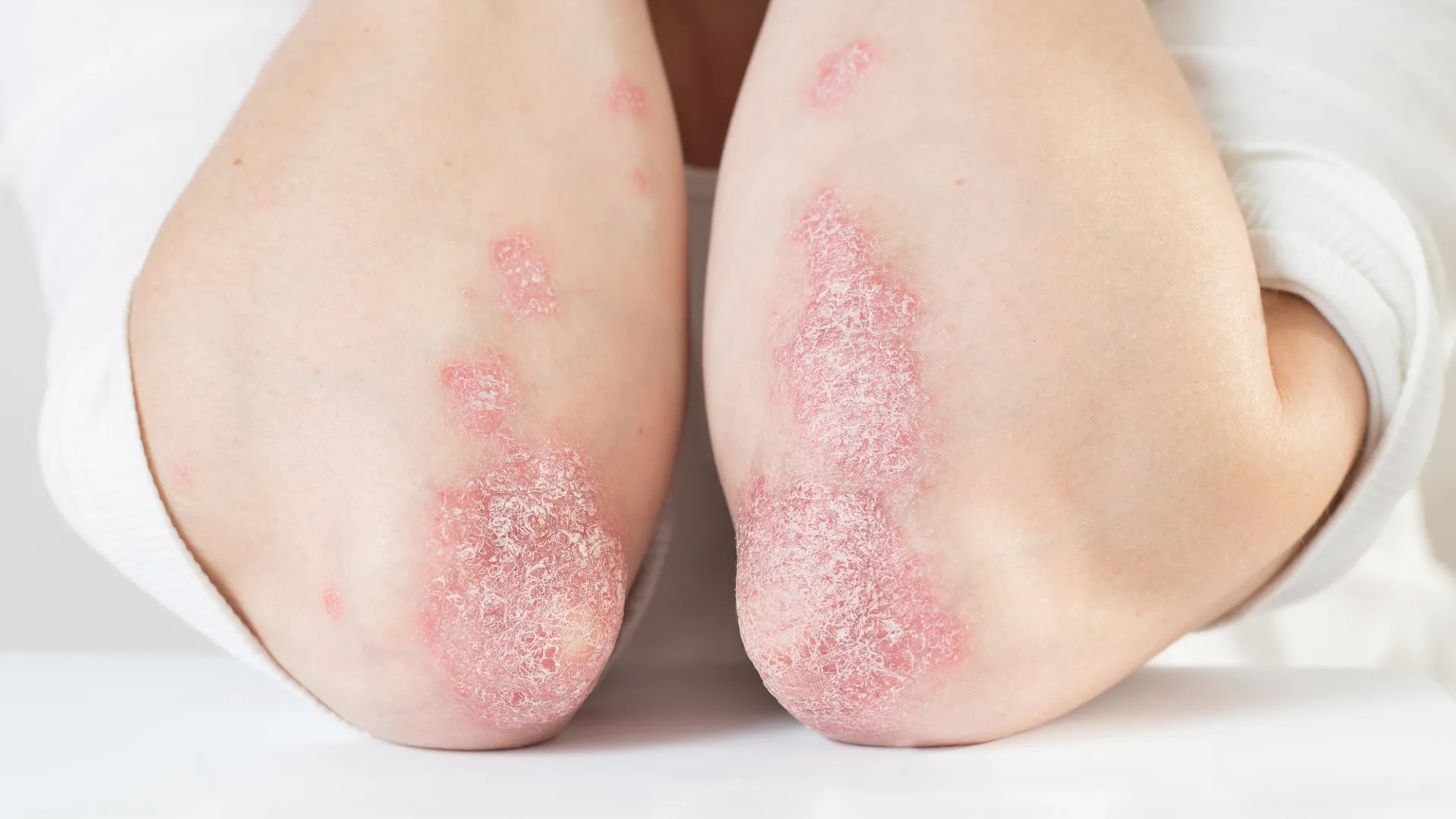Vitiligo
Vitiligo is a skin condition characterized by well-defined white patches of varying sizes. These patches result from the progressive loss of functional melanocytes in the affected areas. The condition affects about 2% of the global population and occurs equally among men and women across all races. It can develop at any age, though it is most common in individuals aged 10 to 30. Studies indicate that about 25% of cases emerge during childhood (under 12 years). A family history of vitiligo is noted in 10-50% of cases.
Pathogenesis
The exact mechanism underlying melanocyte destruction in vitiligo remains unclear, though several contributing factors are recognized:
- Autoimmune factors: The dominant theory suggests that vitiligo is an autoimmune disease in which the immune system mistakenly attacks melanocytes. This autoimmune link is evidenced by the frequent co-occurrence of vitiligo with other autoimmune disorders, such as Hashimoto’s thyroiditis, lupus erythematosus, rheumatoid arthritis, autoimmune diabetes and alopecia areata.
- Genetic predisposition: Genetic factors are believed to play a significant role, as evidenced by familial clustering of the condition.
- Neurochemical factors: Dysfunction within the nervous system may contribute to melanocyte damage.
- Oxidative stress: Some studies suggest that oxidative stress may lead to melanocyte vulnerability and subsequent destruction.
- Intrinsic defects in melanocytes: Certain inherent melanocyte defects may reduce cell survival or trigger self-destruction.
Vitiligo is likely the result of one or a combination of these factors.
Clinical Presentation
Vitiligo manifests as white patches that contrast sharply with surrounding healthy skin. Initially, these patches may appear lighter than the rest of the skin before losing all pigmentation. The patches vary in shape and size, are generally asymptomatic and often present symmetrically.
Vitiligo can affect any part of the body, but it most commonly appears on the face (around the mouth and eyes), underarms, genitals, elbows, knees and the back of the hands and feet. In 10-60% of cases, vitiligo is associated with leukotrichia (white hair) on the scalp, eyebrows, eyelashes and beard.
Clinical Types
Based on the location and extent of depigmented patches, vitiligo is categorized into:
- Localized vitiligo: White patches are confined to one area of the body or are limited to the mucosal regions.
- Generalized vitiligo: The most common type, with patches distributed across various parts of the body. It is further categorized into:
- Non-segmental vitiligo: White patches spread across the body, typically affecting both sides symmetrically.
- Acrofacial vitiligo: Primarily affects the face, hands and feet.
- Mixed vitiligo: A combination of acrofacial and non-segmental types.
- Universal vitiligo: Extensive depigmentation affecting nearly the entire body surface.
Treatment
Although vitiligo is not life-threatening, it significantly impacts patients’ quality of life and psychological well-being. Various treatments can help restore skin pigmentation or create a uniform appearance.
- Topical treatments: Corticosteroids and calcineurin inhibitors are often prescribed, especially for patients with localized patches.
- Phototherapy: Narrowband UVB (NB-UVB) is the primary phototherapy used for vitiligo, promoting repigmentation in many cases.
- Depigmentation therapy: For individuals with extensive vitiligo, depigmentation of unaffected skin can create an even skin tone. This approach is typically reserved for rare, extensive cases.
- Cosmetic solutions: Camouflage creams and makeup can provide temporary coverage, helping patients feel more comfortable in social situations.
- New treatment – JAK inhibitor topical therapy: Recently, topical Janus kinase (JAK) inhibitors, such as ruxolitinib cream, have shown promise in treating vitiligo. JAK inhibitors work by interrupting the autoimmune signaling pathways that lead to melanocyte destruction. This novel treatment provides a new option for patients with vitiligo and has proven effective. It is recommended for individuals with smaller, localized patches (<10% of the body surface) and face involvement.
Some patients show better results than others. Poor prognostic indicators (factors suggesting that treatment may not be very effective) are:
- Segmental or universal vitiligo
- Koebner phenomenon (appearance of vitiligo lesions at sites of skin trauma)
- Polychromia (variation in color within lesions)
- Leukotrichia
- Presence of other autoimmune diseases
- Positive family history of vitiligo
- Initial onset on hands or the back of the trunk
- Onset age younger than 14 years
Prognosis and Management
Vitiligo’s progression is generally unpredictable. It can spread slowly, it can remain stable for years or it may worsen rapidly. Response to treatment varies and depends on many different factors, with darker skin types typically showing better results. Treatment should be tailored to each patient, balancing therapeutic benefits with potential side effects.




